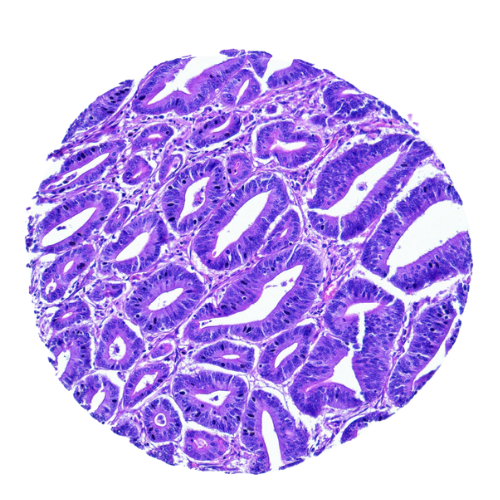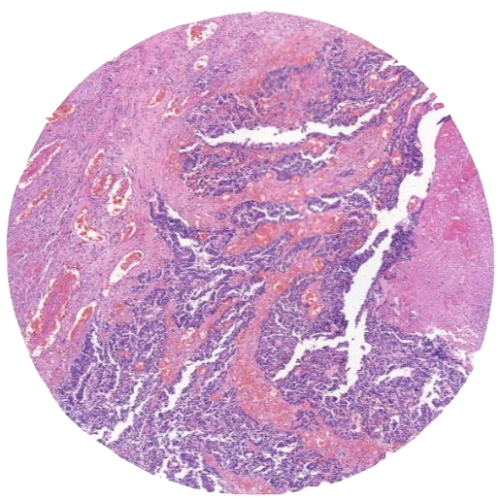Colorectal Tumour Tissue Microarray for Cancer Research
Tissue microarrays (TMAs) are essential tools for high-throughput pathology research, allowing dozens to hundreds of tissue samples to be embedded in a single paraffin block for parallel analysis. This streamlined format is ideal for consistent comparison of biomarker expression across a wide range of patient samples. A colorectal tumour tissue microarray plays a key role in studying colorectal cancer progression, MSI (microsatellite instability) status, immune evasion mechanisms, and differences between colon and rectal tumours. It supports biomarker discovery and validation for early detection, prognosis, and treatment response.
Colorectal tumour TMAs are most commonly used in immunohistochemistry (IHC) and hematoxylin and eosin (H&E) staining. IHC allows for the detection of markers such as MLH1, MSH2, CDX2, and Ki-67—crucial in identifying molecular subtypes and guiding therapeutic strategies. H&E staining provides foundational insights into tumour architecture, glandular differentiation, and inflammatory patterns. These methods, when applied across large, annotated TMA cohorts, accelerate insights into colorectal cancer biology and help develop more precise and effective treatments.
Role of Tissue Microarrays in TME Research
Tissue microarrays have transformed how researchers explore the tumour microenvironment (TME). They enable high-throughput analysis of multiple tissue samples simultaneously, making them essential for identifying biomarkers, conducting immune profiling, and performing spatial analysis. TMAs allow researchers to map immune cell infiltration, tumour heterogeneity, and stromal interactions across a broad cohort. Because human-derived TMAs preserve spatial organization, they provide a more accurate representation of the TME compared to animal models. This accelerates the validation of predictive biomarkers and improves the understanding of therapy response, ultimately pushing forward the development of personalised cancer treatment strategies.
Why Choose MYmAb Biologics' Tissue Microarray Over Others
What sets MYmAb Biologics apart is more than just technical quality. It’s the depth and relevance of our source material:
- IRB-Approved: All tissue samples are ethically sourced under approved Institutional Review Board protocols.
- SEA Sourced Sample: Our tissue microarrays are sourced from Southeast Asian samples, offering distinct population-specific insights that are often missing from Western-focused arrays.
- Fully Consented: Every sample comes from donors who have given informed consent, supporting ethical research standards.
- Comprehensive Data: Each array is curated for metadata richness, covering tumour type, grade, stage, and patient demographics when available.
- Global Delivery: We deliver worldwide with reliable logistics and clear documentation, making our TMAs accessible to researchers everywhere.
We also offer services such as:
Staining Services
High quality H&E and IHC staining services with fast turnaround time and competitive pricing.
IHC Staining Training
Comprehensive 2-day staining training workshop with certification of completion.
Scanning & Storage Services
Scanning service that allows researchers to view slides on the monitor and storing of virtual slides.
Contact Our Team
Location:
Block D-G-8, UPM-MTDC Technology Centre III, Universiti Putra Malaysia, 43400 Serdang, Selangor Darul Ehsan, Malaysia.
Phone:
03-8938 9819
Email:
info.mymab@gmail.com


